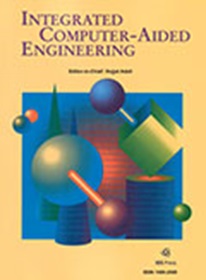EvoAAA: An evolutionary methodology for automated neural autoencoder architecture search
IF 5.8
2区 计算机科学
Q1 COMPUTER SCIENCE, ARTIFICIAL INTELLIGENCE
引用次数: 9
Abstract
Machine learning models work better when curated features are provided to them. Feature engineering methods have been usually used as a preprocessing step to obtain or build a proper feature set. In late years, autoencoders (a specific type of symmetrical neural network) have been widely used to perform representation learning, proving their competitiveness against classical feature engineering algorithms. The main obstacle in the use of autoencoders is finding a good architecture, a process that most experts confront manually. An automated autoencoder architecture search procedure, based on evolutionary methods, is proposed in this paper. The methodology is tested against nine heterogeneous data sets. The obtained results show the ability of this approach to find better architectures, able to concentrate most of the useful information in a minimized coding, in a reduced time.EvoAAA:一种用于自动神经自编码器架构搜索的进化方法
当向机器学习模型提供精选功能时,它们会更好地工作。特征工程方法通常被用作预处理步骤,以获得或构建适当的特征集。近年来,自编码器(一种特殊类型的对称神经网络)被广泛用于表示学习,证明了它们与经典特征工程算法的竞争力。使用自动编码器的主要障碍是找到一个好的架构,这是一个大多数专家手动面对的过程。提出了一种基于进化方法的自动编码器结构搜索方法。该方法针对9个异构数据集进行了测试。得到的结果表明,这种方法能够找到更好的体系结构,能够在最短的时间内以最少的编码集中大部分有用的信息。
本文章由计算机程序翻译,如有差异,请以英文原文为准。
求助全文
约1分钟内获得全文
求助全文
来源期刊

Integrated Computer-Aided Engineering
工程技术-工程:综合
CiteScore
9.90
自引率
21.50%
发文量
21
审稿时长
>12 weeks
期刊介绍:
Integrated Computer-Aided Engineering (ICAE) was founded in 1993. "Based on the premise that interdisciplinary thinking and synergistic collaboration of disciplines can solve complex problems, open new frontiers, and lead to true innovations and breakthroughs, the cornerstone of industrial competitiveness and advancement of the society" as noted in the inaugural issue of the journal.
The focus of ICAE is the integration of leading edge and emerging computer and information technologies for innovative solution of engineering problems. The journal fosters interdisciplinary research and presents a unique forum for innovative computer-aided engineering. It also publishes novel industrial applications of CAE, thus helping to bring new computational paradigms from research labs and classrooms to reality. Areas covered by the journal include (but are not limited to) artificial intelligence, advanced signal processing, biologically inspired computing, cognitive modeling, concurrent engineering, database management, distributed computing, evolutionary computing, fuzzy logic, genetic algorithms, geometric modeling, intelligent and adaptive systems, internet-based technologies, knowledge discovery and engineering, machine learning, mechatronics, mobile computing, multimedia technologies, networking, neural network computing, object-oriented systems, optimization and search, parallel processing, robotics virtual reality, and visualization techniques.
 求助内容:
求助内容: 应助结果提醒方式:
应助结果提醒方式:


